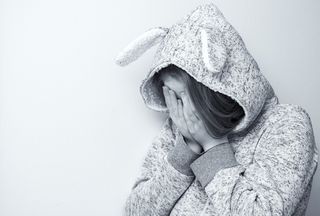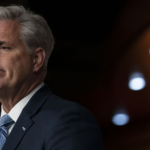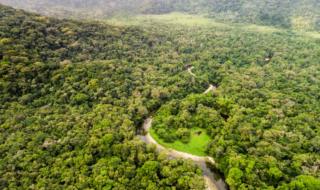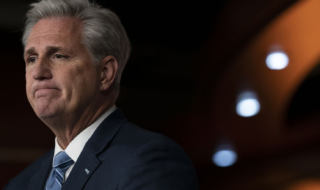
Photo Credit: Forbes
Shortly after the outbreak of coronavirus or COVID-19, many nations across the globe, advised by health scientists and organizations have taken recourse to the physical distancing strategy, which resulted in the social distancing rules. This measure was taken to avoid or minimize the spread of the COVID-19 as it is to other contagious diseases.
Was the social distancing measure based scientific reasoning in the first place, or was it, at some point, influenced by fear that humanity was facing which in turn resulted in strange decisions and laws by governments trying to control and solve the problem?
By analyzing all the circumstances that surrounded the Social distancing law, it is evident that it was not only a proof-based one, but that at a very considerable point, man took that measure influenced by fear. Taking a close look at two main factors can help in understanding why I strongly affirm that fear played an important role in this regard.
- Analyzing the situation in the countries where the social distancing was fully applied:.
In some lands, the Social Distancing policy was religiously observed. Governments took necessary measures to insure that everyone stays indoors, which could minimize physical contact. It was followed by the lockdown of all activities, wearing masks and handwashing practice. It was, therefore, expected that the calamity befalling man, would be under control, and ovoid new COVID-19 cases. However, the results were opposite. The number of those being contaminated kept growing considerably. Which reduced the Social Distancing policy to nothing, proving that it was not a scientifically based- measure in the first place but that man’s fear contributed to its implementation.
2. The second factor is to understand what fear itself is and how it can influence man’s actions, reactions; perspectives and the way he views the world around him:
Fear is associated with anxiety. It is described in simple terms as the fact of constantly feel worried and in most instances without knowing why. Through history, the threat of harm is the main source of fear. This threat can be real or an imagined one. Whether real or imagined, the threat of harm to human can be physical, and emotional. It can be a threat to one’s social status and personality, loss of material things, or linked to social interactions such as being rejected(isolated) by others, and worse enough is the threat of death. In addition to these, comes the inability to discern or identify the exact source of that threat, that is to say its origins, and it makes things grow from bad to worse. This is what happened exactly when COVID-19 invaded human society.
Both great nations and great figures were not spared. Man could sense death coming his way. In countries where it was killing thousands of people, it was a real threat that they needed to fight. On the other hand, in the lands where it was not present, it was an imagined one. This is human. Left without choice, and out of fear, Man tried every kind of strategies he has ever known to contain the threat.
Not knowing the exact origin of the horrible thing, its exact cure or prevention, caused humans, especially, world leaders and scientists to panic and lose balance. All their decisions reflected less reasoning but fear. Signs indicating how a person moved by fear behaves, acts and reacts to his environment that have been discussed by different cognitive Linguists, psychologists and even experts in human communication, help us understand well how fear works.

Facial expressions of fear. While it is natural for humans to express themselves by using facial expressions, these expressions can change when the communicator has fear in him. For example, under threat, while speaking, the person’s eyebrows are straighter and horizontal; the upper lip lifted higher, the eyes become tensed and stretched. Facial expression of different leaders, scientists and other experts who intervened to discuss issues regarding the COVID-19 on international media presented similar signs. Vocal expressions of fear. It is also natural to note changes in someone’s vocalization.
However, it becomes so strange if the speaker is facing a serious trouble and is terrified by it. You can note a change in the way a familiar speaker articulates and produces sounds. For example, the person’s voice comes out with a higher pitch and tone. There is a change in his or her usual vocabulary, a frequent use of expressions that covey a need for help, a simultaneous use of the present and future tenses but simultaneously in the same utterance to expresses the same idea.
You could note, for example, a change in the way these familiar speakers to us, articulated and produced Language sounds. There was a clear change in their choice of vocabulary, pitch and tone. Sensation of fear: not the speaker can alone feel strange feelings caused by fear, but his observant listeners can also sense that the speaker is afraid of something.
This can be observed through his or her body such as, feeling cold and shortness of breath, the tightening of muscles in the hands and legs, and sweating. Finally, the speaker develops a sudden sense of humility different from his or her usual one.
Change of behavior and attitudes indicate fear. Humans are known to change their behavior and attitudes under certain circumstances, this can include even their linguistic behavior. One of the things that can cause Man to change his behavior is fear. This was also observed through all the measures that were taken in order to face the COVID-19.
The tradition of making many strange rules is common among political leaders, company managers, and others in the position of responsibility especially when they are facing trouble.
Finally, the Doubt of the surrounding. An increased doubt of the surrounding is another indicator of strange fear. Out of fear, Man started doubting everything and everyone around him. The doubt of one’s surroundings pushed nations to close their borders, and other associated measures without fundamental evidences that these measures would help in controlling the pandemic and led to the blame of others by associating them with the calamity whether within or outside their communities.
Fear can generate two different kind of reactions. It can cause someone to mobilize himself or demobilize (freeze). When a person is threatened, he can mobilize himself, meaning that he tries to act and confront the threat. He often does so without being conscious of the actions he is taking. Under this condition, his acts can save him or put him into serious danger. Because of panic he cannot reason, he just acts. This can be likened to a person trying to cross a high way.

Imagine that a car is speedily coming his way. Out of fear, he unconsciously jumps and escape the danger. He is safe though he cannot explain how he did so. On the other hand, he can unconsciously jump and hit the car. In this case, his act of fear puts him into serious danger that can even result in death.
Fear can also cause a person to freeze. This means he fails to take any action. Think again about the man crossing the high way, rather than taking any action, because of fear, he decides to sit or stand waiting to die. He is uncertain of what to do. Human society today can fittingly be compared to that person facing a serious danger while crossing the road.
Failing to know the exact origin and cure of the COVID-19, the world has acted out of fear. In some parts of the world, they have unconsciously mobilized themselves to face the threat. They have acted in some sense, such as by taking all the chain of measures and rules that were discussed earlier. Their acts brought some sort of solution, but led them into other serious dangers.
Contribution by:
Martin Mutabazi Mugisha
+ 260 975394117
mugmartino@gmail.com
Lusaka-Zambia















